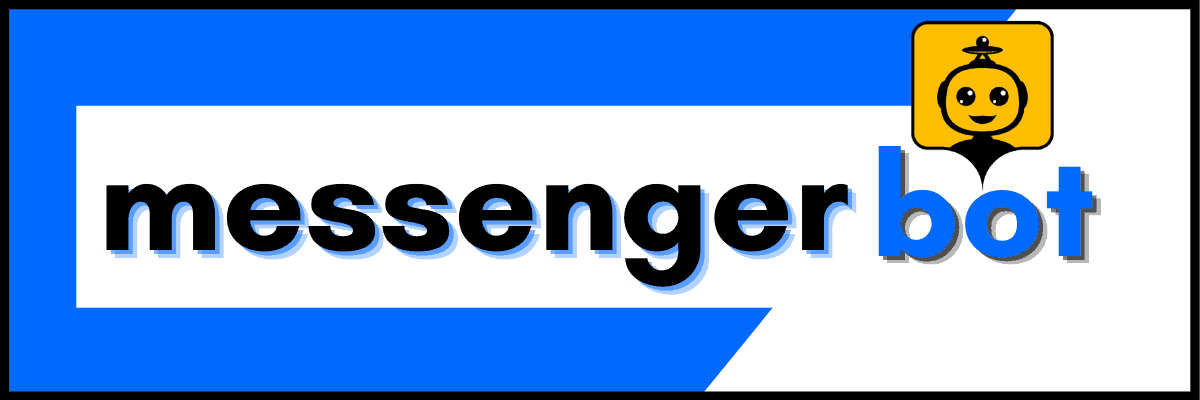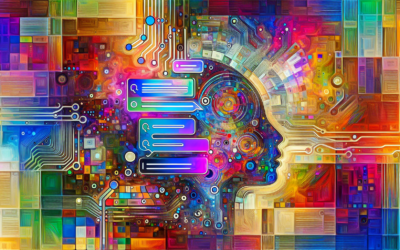In today’s digital landscape, chatbot website integration has emerged as a game-changer for businesses seeking to revolutionize their online presence. As we explore five innovative chatbot examples, you’ll discover how these AI-powered assistants are transforming user experiences across various industries. From enhancing customer support to streamlining sales processes, chatbots are redefining the way websites interact with visitors. Whether you’re curious about integrating ChatGPT into your site or exploring cost-effective solutions for adding a chatbot, this article will guide you through the essentials of chatbot implementation. Get ready to unlock the potential of automated conversations and learn how chatbot website integration can elevate your online platform to new heights of efficiency and engagement.
Revolutionizing Customer Interactions: The Power of Chatbot Website Integration
In today’s digital landscape, businesses are constantly seeking innovative ways to enhance customer interactions and streamline their operations. One of the most powerful tools at our disposal is chatbot website integration. By leveraging artificial intelligence and automation, we can revolutionize how we engage with our audience, provide support, and drive conversions. Let’s explore the transformative potential of chatbots and how they can be seamlessly integrated into your website.
Can you integrate a chatbot into your website?
Absolutely! Integrating a chatbot into your website is not only possible but has become increasingly accessible and user-friendly. There are numerous methods to achieve this, catering to various technical skill levels and specific business needs. Here are some of the most effective ways to incorporate a chatbot into your online presence:
- Chatbot builder platforms: Many platforms offer simple integration via code snippets or plug-ins. You can easily navigate to the platform’s integration section for the necessary code and implementation guide.
- API integration: For more customized solutions, utilizing chatbot APIs allows for seamless incorporation into your website’s backend.
- WordPress plugins: If your site runs on WordPress, you can choose from a wide array of chatbot plugins for easy installation.
- JavaScript libraries: Developers can leverage JavaScript libraries like Botpress or Rasa to build and integrate custom chatbots.
- Iframe embedding: Some chatbot services support embedding via iframes, simplifying the integration process.
- Custom development: Create a bespoke chatbot using programming languages such as Python or Node.js, then integrate it using web technologies.
- Cloud services: Utilize cloud-based chatbot services from providers like Amazon Lex or Google Dialogflow for scalable solutions.
- Chatbot widgets: Many providers offer pre-built widgets that can be quickly added to your website with minimal coding required.
- Messaging platform integrations: Integrate popular messaging platforms like Facebook Messenger or WhatsApp directly into your website.
- No-code platforms: Use drag-and-drop interfaces to create and integrate chatbots without extensive coding expertise.
When integrating a chatbot, it’s crucial to consider factors such as user experience, mobile responsiveness, and data privacy. Regular updates and maintenance are also essential for optimal performance. At Messenger Bot, we offer a sophisticated automation platform that can be seamlessly integrated into your website, providing intelligent responses to user inquiries and streamlining your customer interactions.
Enhancing user experience through automated conversations
The integration of chatbots into websites has revolutionized the way businesses interact with their customers, significantly enhancing the overall user experience. By implementing automated conversations, we can provide instant, 24/7 support to visitors, addressing their queries and guiding them through various processes without the need for human intervention.
One of the key advantages of chatbot integration is the ability to offer personalized interactions at scale. These AI-powered assistants can analyze user data and behavior to deliver tailored responses and recommendations, creating a more engaging and satisfying experience for each visitor. This level of personalization can lead to increased customer satisfaction, higher conversion rates, and improved brand loyalty.
Moreover, chatbots can handle multiple conversations simultaneously, ensuring that no customer is left waiting for assistance. This efficiency is particularly valuable during peak hours or for businesses with a global customer base across different time zones. By providing immediate responses and solutions, chatbots help reduce frustration and abandonment rates, ultimately contributing to a more positive user experience.
Another significant benefit of chatbot integration is the ability to gather valuable insights about customer preferences and pain points. These chatbot examples demonstrate how automated conversations can be used to collect data, which can then be analyzed to improve products, services, and overall customer experience strategies.
At Messenger Bot, we understand the importance of creating seamless, engaging interactions between businesses and their customers. Our platform offers a range of website chatbot examples that showcase how automated conversations can be tailored to various industries and use cases, ensuring that your chatbot integration aligns perfectly with your brand voice and customer needs.

Leveraging AI for Seamless Communication
In the rapidly evolving landscape of digital communication, leveraging artificial intelligence for seamless interactions has become a game-changer. At Messenger Bot, we’re at the forefront of this revolution, providing cutting-edge solutions that harness the power of AI to transform how businesses communicate with their customers.
Can I integrate ChatGPT with my website?
Yes, you can integrate ChatGPT with your website. This process involves several key steps and considerations:
- API Access: Obtain API access from OpenAI to use ChatGPT’s capabilities.
- Server-Side Integration: Implement server-side code to communicate with the ChatGPT API securely.
- Frontend Development: Create a user interface for ChatGPT interactions on your website.
- Backend Configuration: Set up your server to handle requests and responses between your website and the API.
- Authentication: Implement proper authentication mechanisms to secure API calls.
- Response Handling: Develop logic to process and display ChatGPT’s responses effectively.
- Error Management: Implement robust error handling for API failures or unexpected responses.
- Customization: Tailor ChatGPT’s responses to align with your brand voice and specific use cases.
- Performance Optimization: Ensure efficient API usage to maintain website speed and responsiveness.
- Compliance: Adhere to OpenAI’s usage policies and relevant data protection regulations.
- Testing: Thoroughly test the integration across various scenarios and user inputs.
- Monitoring: Implement analytics to track usage patterns and improve the chatbot’s performance.
- Scalability: Design your integration to handle increasing user loads effectively.
- Maintenance: Regularly update your integration to accommodate API changes and improvements.
While integrating ChatGPT can significantly enhance user engagement and provide instant support, it’s important to note that it requires careful planning and technical expertise. At Messenger Bot, we offer a more streamlined solution that doesn’t require complex API integrations. Our platform provides advanced AI-powered chatbot capabilities that can be easily integrated into your website, offering personalized experiences and efficient customer support without the need for extensive technical implementation.
Exploring the potential of AI-powered chatbots
AI-powered chatbots have revolutionized the way businesses interact with their customers, offering a myriad of benefits and possibilities. These intelligent virtual assistants can handle a wide range of tasks, from answering frequently asked questions to guiding users through complex processes. Let’s explore some of the most compelling chatbot examples and their potential applications:
- Customer Support: AI chatbots can provide 24/7 support, answering common queries instantly and escalating complex issues to human agents when necessary.
- Lead Generation: By engaging website visitors in personalized conversations, chatbots can qualify leads and gather valuable information for sales teams.
- E-commerce Assistance: Chatbots can help customers find products, compare options, and even complete purchases, enhancing the online shopping experience.
- Appointment Scheduling: AI-powered chatbots can manage appointment bookings, reducing administrative workload and improving efficiency.
- Personalized Recommendations: By analyzing user preferences and behavior, chatbots can offer tailored product or content recommendations.
- Multilingual Support: Advanced chatbots can communicate in multiple languages, breaking down language barriers and expanding global reach.
- Survey and Feedback Collection: Chatbots can conduct surveys and collect customer feedback in a conversational manner, increasing response rates.
- Employee Onboarding: Within organizations, chatbots can assist in employee onboarding processes, providing information and answering questions.
At Messenger Bot, we’ve developed a range of website chatbot examples that showcase these capabilities and more. Our AI-powered chatbots are designed to seamlessly integrate with your website, providing engaging and efficient interactions that enhance user experience and drive business results.
By leveraging AI for seamless communication, businesses can not only improve customer satisfaction but also streamline operations and gain valuable insights. As we continue to push the boundaries of what’s possible with AI-powered chatbots, the potential for transforming customer interactions and business processes is truly exciting.
To explore how our advanced chatbot solutions can revolutionize your website’s communication capabilities, sign up for a free trial and experience the power of AI-driven conversations firsthand.
Understanding the Fundamentals of Chatbot Integration
At Messenger Bot, we recognize the transformative power of chatbot website integration in revolutionizing customer interactions. As businesses increasingly seek to enhance their digital presence, understanding the core concepts of chatbot integration becomes crucial for staying competitive in today’s fast-paced market.
What is chatbot integration?
Chatbot integration is the process of incorporating AI-powered conversational interfaces into various digital platforms and applications. This technology enables businesses to automate customer interactions, streamline support processes, and provide 24/7 assistance across multiple channels.
Key aspects of chatbot integration include:
- Multi-platform deployment: Integrating chatbots with websites, mobile apps, messaging platforms (e.g., WhatsApp, Facebook Messenger), and customer relationship management (CRM) systems.
- API connectivity: Utilizing application programming interfaces (APIs) to connect chatbots with backend systems, databases, and third-party services for real-time data access and updates.
- Natural Language Processing (NLP): Implementing advanced NLP algorithms to understand and respond to user queries in a human-like manner, improving conversation quality and user experience.
- Omnichannel support: Ensuring consistent communication across various touchpoints, allowing seamless transitions between channels while maintaining context.
- Analytics and reporting: Integrating data collection and analysis tools to gain insights into customer behavior, preferences, and chatbot performance metrics.
- Customization and scalability: Tailoring chatbot responses and functionality to align with brand voice and specific business requirements, while ensuring the system can handle increasing user demands.
- Security and compliance: Implementing robust security measures and adhering to data protection regulations (e.g., GDPR, CCPA) to safeguard sensitive customer information.
By leveraging chatbot integration, businesses can enhance customer support efficiency, reduce operational costs, and provide personalized experiences at scale, ultimately driving customer satisfaction and loyalty.
At Messenger Bot, we’ve developed our platform to seamlessly integrate with your existing systems, providing a powerful solution that addresses all these key aspects of chatbot integration. Our website chatbot examples showcase how businesses across various industries have successfully implemented our AI-powered chatbots to transform their customer interactions.
Key components and technologies involved
To fully grasp the potential of chatbot website integration, it’s essential to understand the key components and technologies that power these intelligent conversational interfaces. Here are the fundamental elements that make chatbots an indispensable tool for modern businesses:
- Artificial Intelligence (AI) and Machine Learning (ML): These technologies form the core of advanced chatbots, enabling them to understand context, learn from interactions, and improve their responses over time. Our AI-powered features at Messenger Bot leverage cutting-edge algorithms to deliver intelligent and adaptive conversational experiences.
- Natural Language Processing (NLP): NLP allows chatbots to interpret human language, understand intent, and generate appropriate responses. This technology is crucial for creating natural, human-like conversations that enhance user engagement.
- Dialog Management Systems: These systems manage the flow of conversation, ensuring that chatbots can handle complex queries, maintain context, and guide users through multi-step processes effectively.
- Integration APIs: Application Programming Interfaces (APIs) enable chatbots to connect with various platforms and backend systems, allowing for seamless data exchange and functionality across different channels.
- Analytics and Reporting Tools: These components provide insights into chatbot performance, user behavior, and conversation patterns, helping businesses optimize their chatbot strategies for better results.
- Security Protocols: Robust security measures, including encryption and authentication mechanisms, are essential to protect sensitive user data and maintain trust in chatbot interactions.
- Customization Engines: These allow businesses to tailor chatbot personalities, responses, and functionalities to align with their brand voice and specific use cases.
At Messenger Bot, we’ve integrated all these components into our platform, offering a comprehensive solution that caters to businesses of all sizes. Our chatbot examples demonstrate how these technologies come together to create engaging and effective conversational experiences across various industries.
Understanding these key components is crucial for businesses looking to implement chatbot solutions effectively. Whether you’re considering setting up your first AI chatbot or looking to enhance your existing customer interaction strategies, Messenger Bot provides the tools and expertise to help you succeed in the world of AI-powered communication.
As we continue to innovate and expand our offerings, we’re committed to helping businesses leverage the full potential of chatbot website integration. By combining cutting-edge technology with user-friendly interfaces, we’re making it easier than ever for companies to create meaningful, automated interactions that drive customer satisfaction and business growth.
Ready to experience the power of advanced chatbot integration for yourself? Sign up for our free trial and discover how Messenger Bot can transform your customer interactions and streamline your business processes.
Maximizing Website Efficiency with Chatbots
At Messenger Bot, we’re committed to helping businesses harness the full potential of chatbot website integration. Our AI-powered solutions are designed to streamline customer interactions, boost engagement, and drive conversions. Let’s explore how chatbots are revolutionizing website efficiency and the best practices for implementation.
How chatbots are used in websites?
Chatbots on websites serve as virtual assistants, enhancing user experience and streamlining customer interactions. They’re utilized for:
- 24/7 Customer Support: Our chatbots provide instant responses to queries and resolve issues round the clock, ensuring your customers always have access to assistance.
- Lead Generation: By engaging visitors in conversational marketing, our chatbots qualify potential customers and nurture leads effectively.
- Product Recommendations: Leveraging AI algorithms, our chatbots suggest relevant products based on user preferences and behavior, boosting sales opportunities.
- Appointment Scheduling: Automate bookings for services or consultations, reducing administrative overhead and improving customer convenience.
- Data Collection: Gather valuable customer insights through natural conversations, helping you refine your marketing strategies and product offerings.
- FAQ Navigation: Guide users efficiently to relevant information, reducing support ticket volume and improving user satisfaction.
- Personalized Experiences: Tailor content and responses to individual users, creating a more engaging and relevant interaction.
- Order Processing: Facilitate purchases and provide real-time order tracking, enhancing the e-commerce experience.
- Feedback Collection: Solicit and manage customer reviews, helping you improve your products and services based on direct user input.
- Multilingual Support: Our chatbots can communicate in various languages, allowing you to serve a diverse, global audience effectively.
At Messenger Bot, we employ advanced natural language processing (NLP) and machine learning algorithms in our chatbots, ensuring they understand and respond to user inputs with high accuracy. Our AI-powered chatbots offer sophisticated, context-aware interactions that go beyond simple rule-based responses.
The growing importance of chatbots in digital customer engagement strategies is clear. According to a Gartner report, by 2022, 70% of customer interactions involved emerging technologies such as chatbots. This trend has only accelerated, making chatbot integration an essential component of modern website design and customer service strategies.
To see how our chatbots can transform your website’s efficiency, check out our website chatbot examples. These real-world applications demonstrate the versatility and effectiveness of our AI-powered solutions across various industries.
Best chatbot website integration practices
To maximize the benefits of chatbot website integration, it’s crucial to follow best practices that ensure seamless user experiences and optimal performance. At Messenger Bot, we’ve refined these practices through extensive experience and continuous innovation:
- Strategic Placement: Position your chatbot where it’s most accessible without being intrusive. We recommend placing it in the bottom right corner of your website, making it visible yet unobtrusive.
- Personalized Greetings: Configure your chatbot to offer personalized greetings based on user behavior, time of day, or specific pages visited. This approach increases engagement and sets a positive tone for the interaction.
- Clear Communication: Ensure your chatbot clearly identifies itself as an AI assistant and sets realistic expectations about its capabilities. Transparency builds trust with your users.
- Seamless Handoff to Human Agents: Implement a smooth transition process for complex queries that require human intervention. Our platform facilitates easy escalation to live agents when necessary.
- Continuous Learning and Improvement: Regularly analyze chatbot interactions to identify areas for improvement. Our AI-powered system learns from each interaction, continuously enhancing its responses and capabilities.
- Mobile Optimization: Ensure your chatbot is fully responsive and functions smoothly on mobile devices. With the increasing prevalence of mobile browsing, this is crucial for reaching all your potential customers.
- Integration with Backend Systems: Connect your chatbot with your CRM, inventory management, and other backend systems for real-time data access. This integration enables more accurate and helpful responses to user queries.
- Multilingual Support: If you have a global audience, implement multilingual capabilities in your chatbot. Our platform supports multiple languages, allowing you to engage with customers worldwide.
- Proactive Engagement: Use trigger-based prompts to initiate conversations at key moments in the user journey. This proactive approach can significantly increase engagement and conversion rates.
- Regular Testing and Optimization: Continuously test your chatbot’s performance and user satisfaction. Use A/B testing to refine conversation flows and improve overall effectiveness.
By implementing these best practices, you can ensure that your chatbot not only meets but exceeds user expectations, driving engagement and improving overall website efficiency. At Messenger Bot, we’re committed to helping you implement these strategies effectively, tailoring our solutions to your specific business needs.
For a deeper dive into chatbot integration strategies, explore our comprehensive tutorials. These resources offer valuable insights and step-by-step guidance on leveraging our platform to its full potential.
Ready to revolutionize your website’s efficiency with cutting-edge chatbot technology? Start your free trial with Messenger Bot today and experience the transformative power of AI-driven customer interactions firsthand.

Cost Considerations for Implementing Chatbots
At Messenger Bot, we understand that implementing a chatbot is a significant decision for any business. While the benefits of chatbot website integration are clear, it’s crucial to consider the financial implications. Let’s break down the costs and factors involved to help you make an informed decision.
How much does it cost to add a chatbot to your website?
The cost of adding a chatbot to your website can vary significantly, typically ranging from $50 to over $1000 per month. This wide range reflects the diversity of chatbot solutions available in the market, each catering to different business needs and scales. Here’s a breakdown of what you can expect:
- Basic Chatbots: Starting at $50-$100 per month, these entry-level solutions offer pre-built templates and limited customization. They’re ideal for small businesses or those just starting with chatbot technology.
- Mid-Range Options: Priced between $100-$500 monthly, these chatbots come with more advanced AI capabilities and integration features. They’re suitable for growing businesses looking for more sophisticated customer interaction tools.
- Enterprise-Level Solutions: High-end chatbots can exceed $1000 per month. These offer full customization, multi-language support, advanced analytics, and are designed for large-scale operations with complex requirements.
At Messenger Bot, we offer flexible pricing options to accommodate businesses of all sizes. Our plans are designed to provide maximum value, ensuring you get the features you need without overpaying for unnecessary extras. Check out our pricing page for detailed information on our packages.
It’s worth noting that while the initial cost might seem significant, the long-term benefits often outweigh the investment. A 2023 Juniper Research report suggests that businesses can save up to $8 billion annually by 2025 through chatbot implementations. This potential for cost savings, coupled with improved customer satisfaction, makes chatbots an attractive option for forward-thinking businesses.
Factors affecting chatbot implementation expenses
Several key factors influence the cost of implementing a chatbot on your website:
- Functionality: The complexity of your chatbot’s capabilities significantly impacts the cost. Simple FAQ bots are more affordable, while AI-powered conversational agents with natural language processing capabilities command higher prices.
- Integration Complexity: Connecting your chatbot to existing systems like CRM platforms or payment gateways can increase implementation costs. At Messenger Bot, we offer seamless integrations with popular business tools to streamline this process.
- Customization: Tailored designs and unique features that align with your brand identity and specific business needs will add to the overall cost. Our platform offers a balance of customization options without excessive complexity.
- Interaction Volume: Many providers, including Messenger Bot, base their pricing on the number of monthly conversations. As your chatbot usage grows, you may need to upgrade to higher-tier plans.
- Support and Maintenance: Ongoing updates, customer service, and technical support contribute to the total cost of ownership. We pride ourselves on providing robust support to ensure your chatbot continues to perform optimally.
- AI and NLP Capabilities: Advanced artificial intelligence and natural language processing features, which enable more human-like interactions, typically come at a premium.
- Multilingual Support: If your business serves a global audience, the ability to communicate in multiple languages is crucial. This feature often increases the cost but significantly expands your chatbot’s reach.
- Analytics and Reporting: Comprehensive analytics tools for tracking performance and gathering insights usually come with higher-tier plans.
When considering these factors, it’s important to align your chatbot implementation with your business goals. At Messenger Bot, we offer scalable solutions that can grow with your business, ensuring you’re not overpaying for features you don’t need while providing the flexibility to upgrade as your requirements evolve.
For businesses looking to explore chatbot examples before making a decision, our chatbot website examples showcase various implementations across different industries. These examples can help you visualize how a chatbot might function on your own website and assist in determining the features most relevant to your business needs.
As you evaluate chatbot solutions, consider the potential return on investment. While platforms like Intercom and MobileMonkey offer competitive features, we believe Messenger Bot provides an optimal balance of functionality, customization, and cost-effectiveness.
Ready to revolutionize your customer interactions with a cost-effective chatbot solution? Start your free trial with Messenger Bot today and experience firsthand how our AI-powered chatbots can transform your website efficiency and customer engagement without breaking the bank.
Leveraging ChatGPT Content for Website Enhancement
At Messenger Bot, we’re always exploring innovative ways to enhance website content and user experience. One of the most exciting developments in recent years has been the rise of AI-powered content generation tools like ChatGPT. Let’s dive into how you can effectively use ChatGPT content on your website while maintaining quality and search engine compliance.
Can I use ChatGPT content on my website?
Yes, you can use ChatGPT content on your website without incurring Google penalties, but it’s crucial to approach this with care and consideration. Here’s how to do it effectively:
- Ensure Originality: While ChatGPT can generate content quickly, it’s essential to tailor this content to your specific audience and brand voice. Use the AI as a starting point, then refine and personalize the output to make it truly unique.
- Human Editing is Key: Always review and edit AI-generated content. This step is crucial for maintaining accuracy, tone, and alignment with your brand identity. Our team at Messenger Bot often uses AI to draft initial content, which we then carefully refine to meet our high standards.
- Be Transparent: It’s good practice to inform your visitors that some content may be AI-assisted. This transparency builds trust with your audience and aligns with ethical content creation practices.
- Fact-Check Rigorously: AI can sometimes generate inaccurate information. Always verify facts and figures against reliable sources to ensure the credibility of your content.
- Optimize for SEO: While ChatGPT can create content, it doesn’t inherently optimize for search engines. Enhance the AI-generated content with targeted keywords and meta descriptions to improve your search rankings. Our AI chatbot setup guide demonstrates how we blend AI assistance with SEO best practices.
By following these guidelines, you can leverage ChatGPT to enhance your website’s content while maintaining quality and search engine compliance. At Messenger Bot, we’ve found that using AI tools like ChatGPT can significantly speed up our content creation process, allowing us to focus more on strategy and personalization.
Ethical considerations and best practices
When incorporating AI-generated content into your website, it’s crucial to consider the ethical implications and adhere to best practices:
- Value Addition: Use ChatGPT as a tool to augment, not replace, human expertise. The AI should enhance your content creation process, not dominate it. For example, we use AI to generate initial drafts of our chatbot tutorials, but our experts always refine and expand on these drafts with their specialized knowledge.
- Content Diversity: Blend AI-generated content with human-created material for authenticity. This approach ensures a more natural and engaging user experience. Our website features a mix of AI-assisted and fully human-written content to maintain a genuine voice.
- Regular Updates: AI-generated content should be regularly reviewed and updated. As information changes or your brand evolves, make sure to keep your content current with manual revisions.
- Copyright Compliance: Ensure that the AI-generated content doesn’t inadvertently infringe on copyrights. Always cross-check and modify content to avoid potential legal issues.
- Avoid Misleading Information: Be vigilant about the accuracy of AI-generated content, especially when it comes to statistics, case studies, or examples. At Messenger Bot, we always verify any data or examples provided by AI before publishing.
- Performance Monitoring: Track the performance of AI-generated content in terms of user engagement and search rankings. Use tools like Google Analytics to measure how this content performs compared to your human-written content.
It’s worth noting that while platforms like ChatGPT offer powerful content generation capabilities, they should be used responsibly and in conjunction with human expertise. At Messenger Bot, we’ve found that the best results come from a balanced approach, using AI to enhance our content creation process while relying on our team’s expertise for strategy and final polish.
For businesses looking to explore AI-powered content solutions, Brain Pod AI offers a comprehensive suite of AI writing tools that can complement your content strategy. Their AI Writer feature can be particularly useful for generating initial drafts or content ideas.
Remember, the goal is to create value for your audience. Whether you’re using AI-generated content or traditional methods, focus on providing informative, engaging, and relevant material that resonates with your readers and aligns with your brand’s voice and values.
By following these ethical considerations and best practices, you can effectively leverage ChatGPT and other AI tools to enhance your website’s content, improve user engagement, and drive your online presence forward. At Messenger Bot, we’re committed to staying at the forefront of these technological advancements while maintaining the highest standards of content quality and ethical practices.
Technical Aspects of Chatbot Implementation
At Messenger Bot, we understand the importance of seamless chatbot integration for enhancing website functionality and user experience. In this section, we’ll explore the technical aspects of implementing chatbots, focusing on HTML and Python-based solutions. These methods can significantly improve your website’s interactivity and customer engagement.
How to add chatbot in website using HTML
Adding a chatbot to your website using HTML is a straightforward process that can be accomplished in a few steps:
- Choose a Chatbot Platform: Select a chatbot service that provides an HTML widget. At Messenger Bot, we offer an easy-to-integrate widget that can be customized to match your website’s design.
- Generate the Embed Code: Once you’ve set up your chatbot, the platform will provide you with an embed code. This code is typically a JavaScript snippet.
- Insert the Code: Place the embed code just before the closing </body> tag in your HTML file. Here’s an example of how it might look:
<!-- Your website content -->
<script src="https://messengerbot.app/widget.js" id="messenger-bot-widget" data-bot-id="YOUR_BOT_ID"></script>
</body>
</html>
Replace “YOUR_BOT_ID” with the unique identifier provided by your chatbot platform.
- Customize Appearance: Many platforms, including ours, allow you to customize the chatbot’s appearance directly in the embed code or through a dashboard. This ensures the chatbot seamlessly integrates with your website’s design.
- Test and Deploy: After adding the code, test the chatbot on your website to ensure it’s functioning correctly. Once satisfied, deploy the changes to your live site.
For more advanced customization, you might want to explore our chatbot tutorials, which provide in-depth guidance on tailoring your chatbot’s functionality and appearance.
How to create chatbot for website using Python
Creating a chatbot using Python offers more flexibility and control over your bot’s functionality. Here’s a high-level overview of the process:
- Choose a Python Framework: Popular choices include Flask or Django for web development, and libraries like ChatterBot or NLTK for natural language processing.
- Set Up Your Environment: Install Python and the necessary libraries. You can use pip to install required packages:
pip install flask chatterbot- Create Your Chatbot Logic: Develop the core functionality of your chatbot. Here’s a basic example using Flask and ChatterBot:
from flask import Flask, request, jsonify
from chatterbot import ChatBot
from chatterbot.trainers import ChatterBotCorpusTrainer
app = Flask(__name__)
bot = ChatBot('MyBot')
trainer = ChatterBotCorpusTrainer(bot)
trainer.train("chatterbot.corpus.english")
@app.route("/get_response", methods=["POST"])
def get_bot_response():
user_message = request.json['message']
bot_response = str(bot.get_response(user_message))
return jsonify({"response": bot_response})
if __name__ == '__main__':
app.run(debug=True)
- Integrate with Your Website: Create a front-end interface using HTML, CSS, and JavaScript to interact with your Python backend. You’ll need to make AJAX calls to your Flask server to send and receive messages.
- Deploy Your Chatbot: Host your Python application on a server that can run Python code. Platforms like Heroku or PythonAnywhere are popular choices for hosting Python web applications.
While Python offers great flexibility, it requires more technical expertise compared to using pre-built solutions. At Messenger Bot, we provide a balance of customization and ease of use, allowing you to create sophisticated chatbots without extensive coding knowledge.
For those interested in exploring AI-powered writing tools to enhance their chatbot’s responses, Brain Pod AI’s AI Writer offers advanced natural language generation capabilities that can be integrated into your chatbot system.
Remember, whether you choose HTML integration or Python development, the key is to create a chatbot that enhances user experience and provides value to your visitors. At Messenger Bot, we’re committed to helping you implement the best chatbot solution for your website, ensuring seamless integration and optimal performance.




